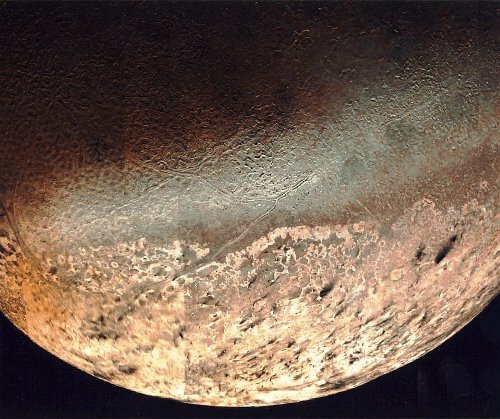owlice wrote:
Avon River.JPG

-----------------------------------------------
"Sweet SWAN of AVON! what a sight it were
.To see thee in our waters yet appeare,
.And make those flights upon the bankes of Thames,
.That so did take Eliza, and our James !
.But stay, I see thee in the Hemisphere
.Advanc'd, and made a CONSTELLATION there !
.Shine forth, thou Starre of Poets, and with rage,
.Or influence, chide, or cheere the drooping Stage;
.Which, since thy flight fro' hence, hath mourn'd like night,
.And despaires day, but for thy Volumes light."
- Ben Jonson dedication in the _First Folio_
----------------------------------------------
<<*A STAR, a daySTAR* a firedrake, rose at his birth. It shone by day
in the HeaVENs alone, brighter than Venus in the NIGHT, and by NIGHT
it shone over delta in Cassiopeia, the recumbent CONSTELLATION which
is the signature of his initial among the stars. His eyes watched it,
lowlying on the horizon, eastward of the bear,
as he walked by the slumberous summer fields at
midNIGHT returning from Shottery and from her arms.>>
- James Joyce's _Ulysses_
----------------------------------------------------------
Two super
NOVA were pertinent to Shake-speare/Oxford's life/death:
[Tycho & Kepler recorded these
NOVA from the island
of
HVEN just a few miles south of Elsinore castle.]
. ------------------
Tycho's
NOVA: In November, 1572 in Cassiopeia
.(Five months after Eliza had executed Oxford's
. beloved cousin, the Duke of Norfolk).
.
.[Cassiopeia was the Ethiopian Queen who boasted that
.she and daughter Andromeda were more beautiful than
.the Nereids. Andromeda had to be sacrificed to the
.sea monster Cetus to appease Poseidon but was rescued
.by Perseus. Cassiopeia then tried to stop Perseus from
.marrying Andromeda but Perseus turned her to stone
.with the evil eye (Algol/1572 nova?) of Medusa.]
.
The Nov. 1572
NOVA transformed Cassiopeia into a crooked cross
. or small Cygnus/
SWAN constellation.
----------------------------------------------------
. Julius Caesar, Act 2,2
.
When beggars die, there are no comets seen;
The
HeaVENs themselves blaze forth the death of princes.
-------------------------------------------------------------
________*WILL SHAKSPERE*
__________ {anagram}
______*HLAS W.S. : I. KEPLER*
----------------------------------------------------
KEPLER's NOVA: In October, 1604 in Ophiuchus/SERPENS.
. Four months after Oxford himself died.
.
<<Ophiuchus (off-ih-YOU-cus) struggling with the monster
SERPENT constellation SERPENS symbolizes the struggle of light
against darkness, order versus chaos, and good versus evil.
---------------------------------------------------------
[Ophiuchus was Asclepius/ son of Apollo by unfaithful wife
Coronis. Asclepius learned the healing arts from Chiron
and angered Hades by granting virtual immortality with the
blood of Medusa. Zeus struck Asclepius with a thunderbolt.]
.
.The Oct. 1604 nova (& nearby Jupiter & Saturn) transformed
.Ophiuchus/Serpens into a new constellation that very much
.resembled a large
SWAN taking off from S.West horizon
.just over the setting sun (in Scorpius). It was a phoenix
.like symbol (carrying English language & culture across
. the Atlantic to the New World in the South West).
http://antwrp.gsfc.nasa.gov/apod/ap070116.html wrote:
.
<<What caused this mess? Some type of star exploded to create the
unusually shaped nebula known as Kepler's supernova remnant, but which
type? Light from the stellar explosion that created this energized
cosmic cloud was first seen on planet Earth in October 1604, a mere
400 years ago. The supernova produced a bright new star in early
17th century skies within the constellation Ophiuchus. It was studied
by astronomer Johannes Kepler & his contemporaries, with out the benefit
of a telescope, as they searched for an explanation of the heavenly
apparition. Armed with a modern understanding of stellar evolution,
early 21st century astronomers continue to explore the expanding debris
cloud, but can now use orbiting space telescopes to survey Kepler's
supernova remnant (SNR) across the spectrum. Recent X-ray data
and images of Kepler's supernova remnant taken by the orbiting
Chandra X-ray Observatory has shown relative elemental
abundances more typical of a Type Ia supernova,
indicating that the progenitor was a white dwarf star
that exploded when it accreted too much material and went over
Chandrasekhar's limit. About 13,000 light years away, Kepler's
supernova represents the most recent stellar explosion seen
to occur within our Milky Way galaxy.>>



